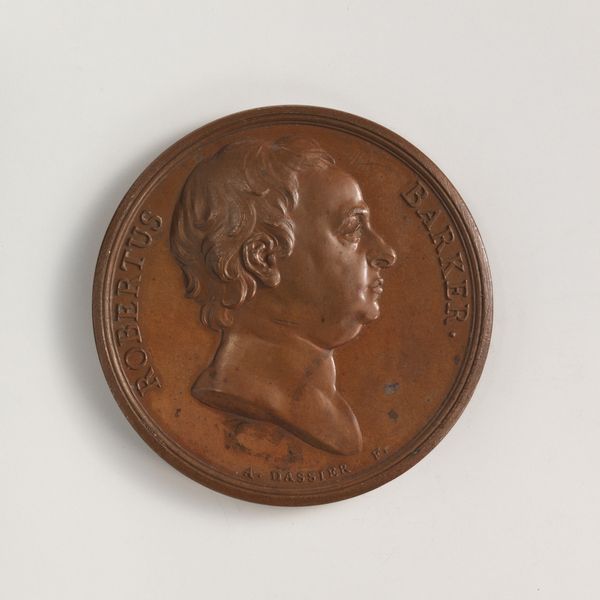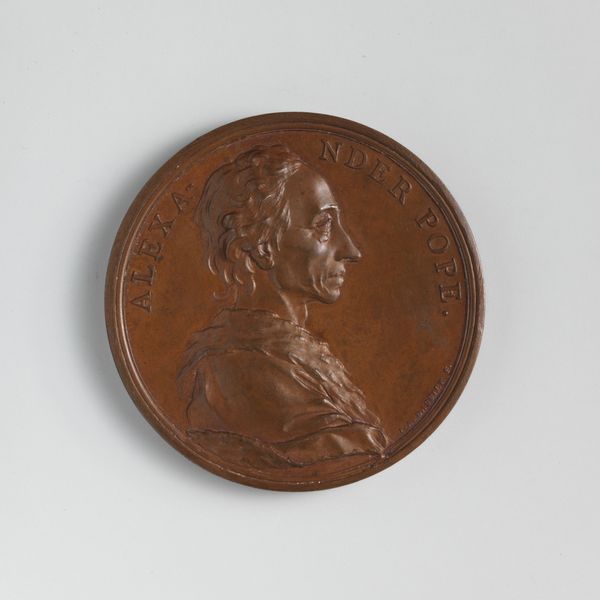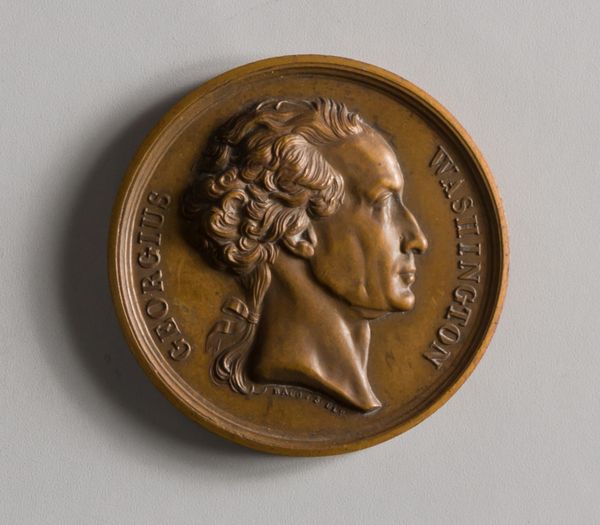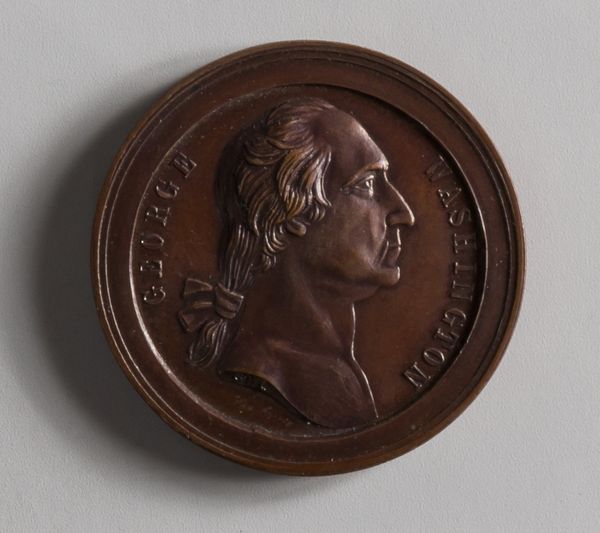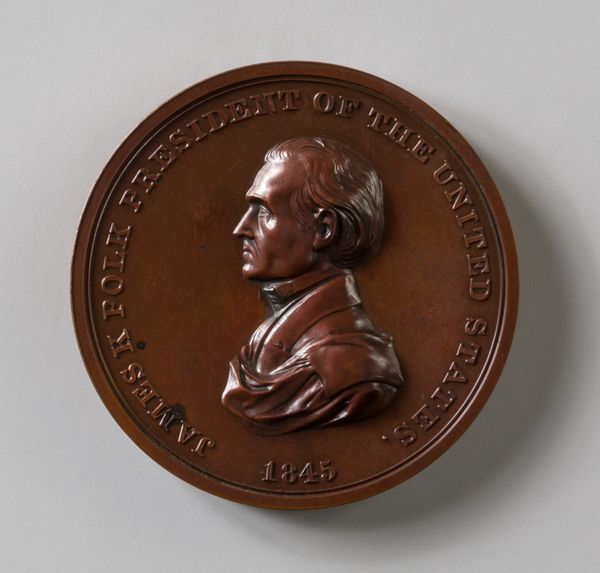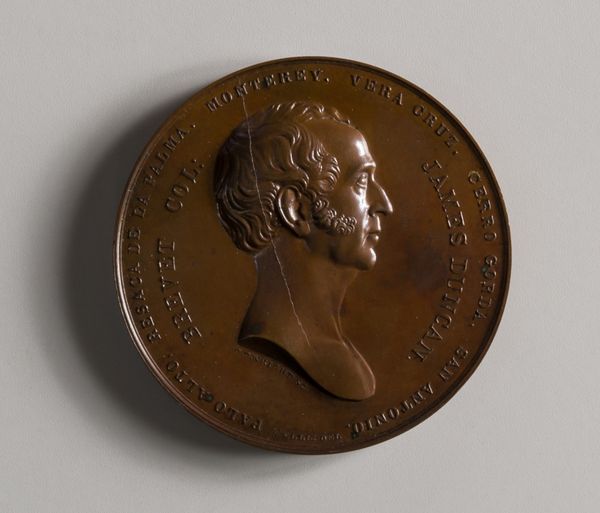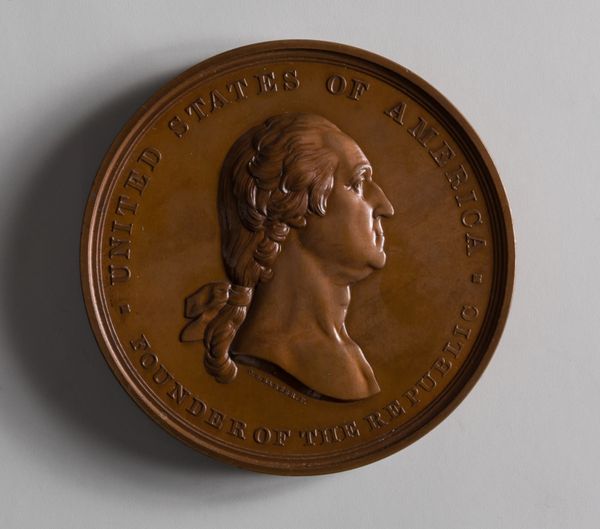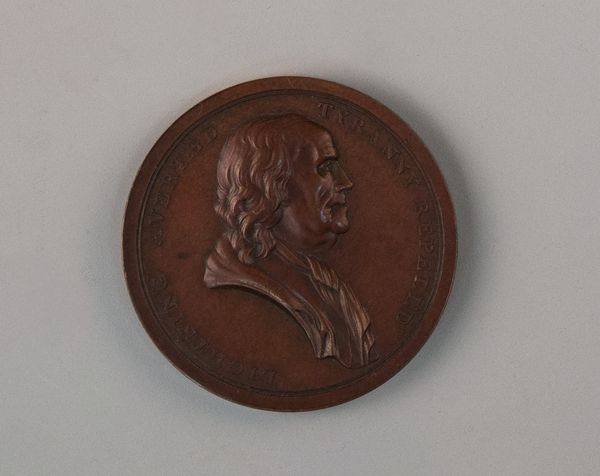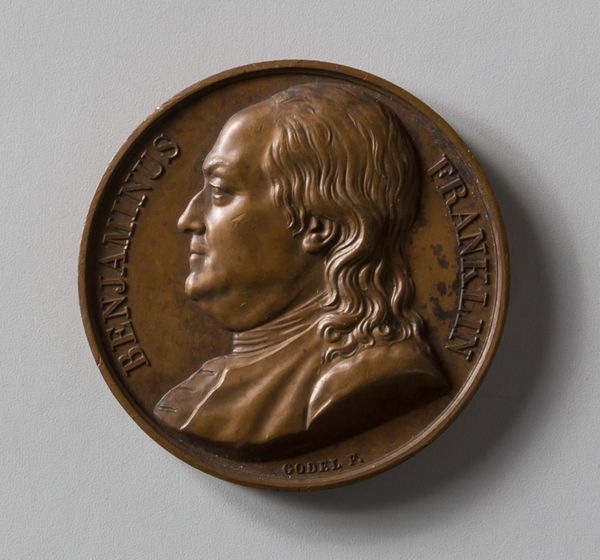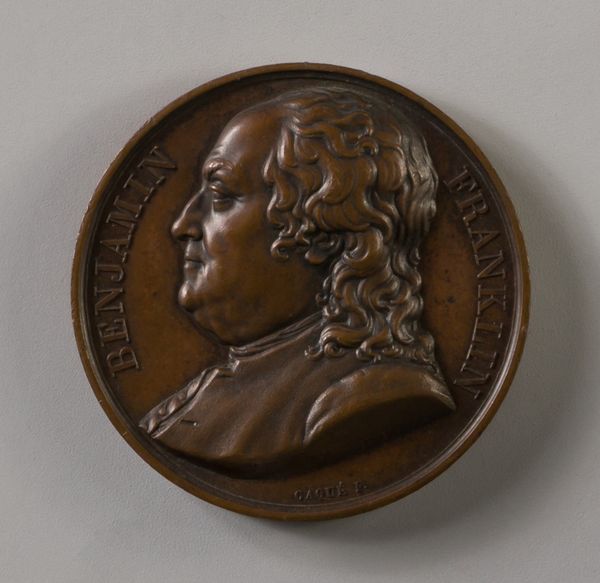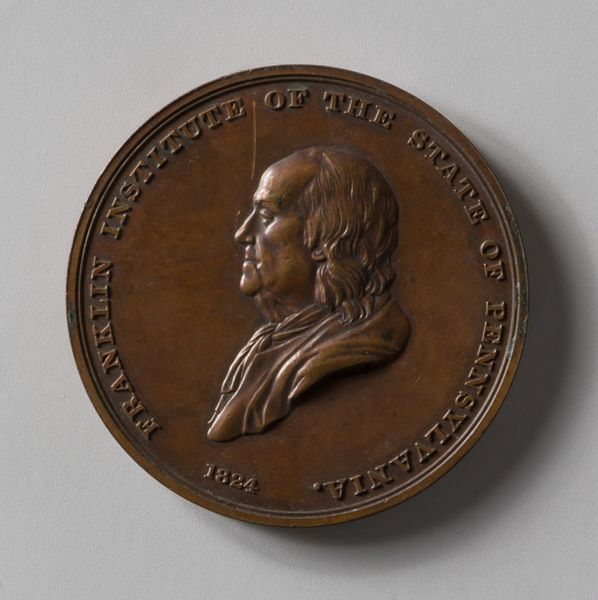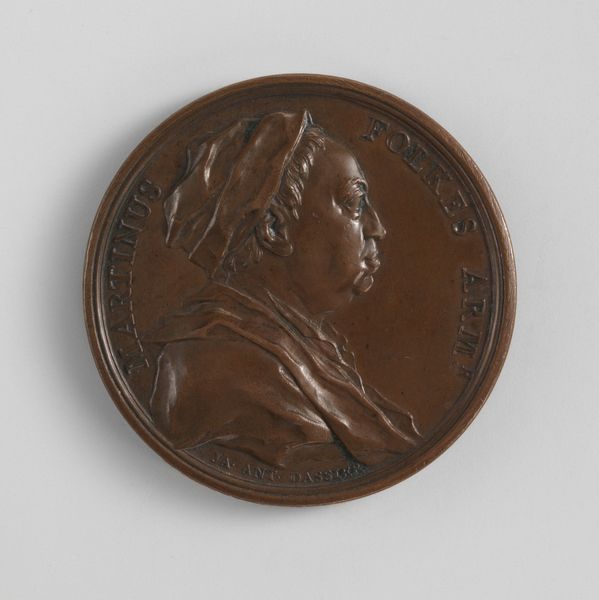
metal, relief, bronze, sculpture
#
portrait
#
neoclacissism
#
metal
#
sculpture
#
relief
#
bronze
#
sculpture
#
profile
Dimensions: Diam. 3 in. (7.6 cm)
Copyright: Public Domain
Curator: Here we have Charles Cushing Wright’s bronze relief, "Henry Clay," crafted sometime between 1853 and 1862. It’s currently residing here at the Met. Editor: Oh, that’s neat. It's kind of striking, almost like a Roman coin, but bigger and shinier. It has this strong, authoritative vibe; all about legacy, I reckon. Curator: The choice of bronze definitely lends to that air of permanence. Notice the profile view, the sharp lines defining Clay's features, the clear influence of Neoclassical portraiture aiming for idealized representation. Semiotically speaking, the profile view implies the clarity, nobility and status we typically associated with classical coins depicting great leaders. Editor: Nobility? He looks kind of worried, actually. Maybe he was just having a bad hair day; it doesn't have the bounce and carefree elegance that's now back in fashion. I mean, the hair doesn’t quite scream "statesman" to me. Is it attempting classical or giving up on it completely? I like it, but… Curator: The hair suggests an interesting point, actually; It departs from rigid neoclassical convention and subtly introduces a modern sensibility through that naturalism, reflecting perhaps the evolving style of portraiture. Notice, as well, the meticulously inscribed details - his name, the dates of his birth and death encircling the portrait. These aren't just ornamental; they provide a biographical framework. Editor: So it's about remembering and placing him in time? Like freezing a moment. Kinda makes you wonder what moments we decide to preserve and why. Plus, bronze is lovely to touch—or at least it looks like it. Does it get handled much or remain encased in glass, untouchable, perfect? I find that interesting too...our impulse to handle art and engage physically with our past. Curator: Precisely, it serves as both commemoration and historical record, speaking to Clay’s political prominence. But it is mostly encased in glass these days, only seen. Perhaps Wright wants to elevate Clay to that classical heroic status. This piece embodies the enduring dialogue between artistic ideals and human frailty. Editor: I guess seeing is believing, eh? From up close and now standing back and considering your expertise, that’s not a frozen moment but, rather, a thoughtful translation of a complicated fella into a shiny badge for posterity.
Comments
No comments
Be the first to comment and join the conversation on the ultimate creative platform.
